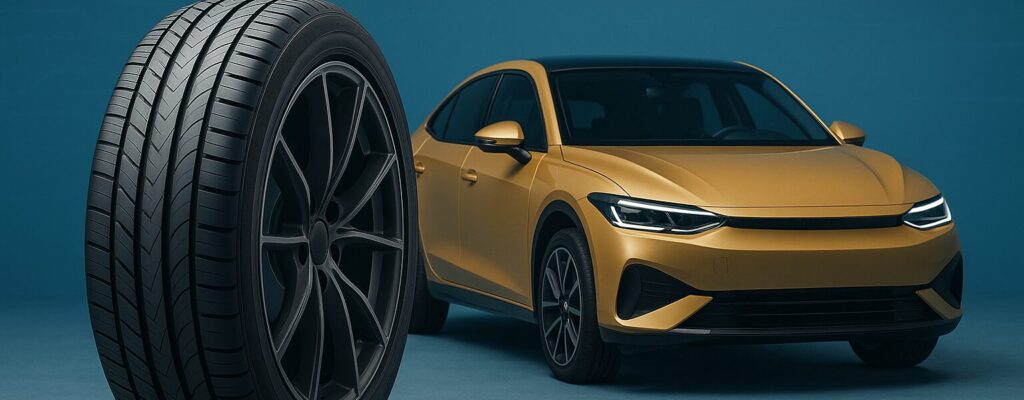
EV (Electric Vehicles) Revolution in APAC: A New Road for the Tyre Industry
Since 2020, the development of electric vehicles (EVs) has seen significant growth across the APAC region. While countries like China and South Korea are accelerating their transition to fully electric mobility, Japan shows a more cautious progression. Although the number of EVs has increased between 2020 and 2024, Japanese drivers remain hesitant about fully electric powertrains, as hybrid vehicles have long dominated the domestic market.
Car manufacturers have accelerated their efforts, leading to a surge in EV launches and innovations. Recent releases highlight this momentum: China has introduced models like the Xiaomi SU7 Ultra, Yangwang U7, and BYD Qin L EV; Japan has seen the debut of the Nissan Clipper, Honda N-Van e:, and Mini Aceman E; while South Korea has launched the Hyundai Ioniq 9 and Casper EV, and Cadillac Lyriq.
This accelerated transition toward electrification raises important questions for related industries—particularly the tyre sector. How is the growing EV fleet reshaping tyre demand, design, and innovation in APAC? Let’s explore the implications.
EVs are different from conventional vehicles for a number of reasons:
- Electric motors deliver instant power with maximum torque when the vehicle starts up.
- The braking system (known as regenerative braking) is different on electric vehicles. The electric motor is automatically used to recover the kinetic energy generated by braking. This energy is transformed into electrical energy which recharges the vehicle’s battery.
- The weight of an EV is much greater because of the batteries.
- Finally, electric vehicles are quieter because of their motor technology.
These characteristics have an impact on the tyre industry. With the rapid rise in manufacturing these vehicles, tyre manufacturers have had to adapt to newly imposed requirements.
To meet these requirements, manufacturers have created specific products or ranges dedicated to EVs. Some manufacturers have added the 2 letters ‘EV’ (standing for Electric Vehicle) to the name of their product or have created a specific ‘EV’ marking, while others have launched a range of products such as Hankook’s iON range. We can see that the range of tyres available on APAC (Chinese and Japanese markets) for EVs has literally exploded over the last 5 years, rising from just a few dozen products in 2020 to 757 last year. (We are excluding tyres with an EV Ready marking, which are equally well suited to electric, hybrid and internal combustion vehicles).
*Source: Lizeo Global Tyre Database – Evolution of the range of EV tyres available in China and Japan only for sale online
Tyres designed and adapted to the specific needs of electric vehicles:
1. Maintaining grip when faced with instant maximum power
Because of the instantaneous power of the electric motors as soon as the vehicle is started up, tyres are under significant stress. They must be strong enough to withstand and transmit the surge of power and have excellent grip to ensure good traction.
2. Reducing tyre wear
With the acceleration and regenerative braking inherent in EVs, tyres wear out more quickly. To improve tyre longevity, tyre manufacturers have modified the composition of the rubber, making it much more resistant.
3. Supporting the weight of the vehicle
EVs are much heavier than internal combustion vehicles because of the batteries. These are generally located at the bottom of the vehicle, lowering the center of gravity. These constraints mean that tyre manufacturers have to design reinforced tyres capable of supporting this extra load while maintaining performance and durability. With the growth of electric vehicles on the market, reinforced tyres in XL (Extra Load) and HL (Heavy Load) sizes have become increasingly popular. HL tyres were introduced to the market in 2021 to support even greater loads than XL tyres.
4. Reducing rolling resistance
Reducing rolling resistance to increase the vehicle range is a major challenge for car manufacturers. For this reason, they opt for narrower tyres to reduce the surface area in contact with the ground. To maintain sufficient load capacity, the diameter of these tyres has increased.
An analysis of the tyre offer online in APAC* reveals that 68% of EV tyres are available in 19, 20 and 21 inch sizes, while 51% of models on the market as a whole are in 16, 17 and 18 inch sizes.
*Source: Lizeo – EV tyres available in China and Japan only for sale online by diameter – 2024 – Lizeo Global Tyre Database .
5. Maintaining on-board comfort
Electric cars are much quieter than internal combustion cars. As a result, tyre noise can no longer be masked by engine noise. Tyre manufacturers therefore use treads made from a specific rubber that limits the production of decibels. Narrower tyres also contribute to this reduction in noise.
Tyres for EVs are generally more expensive than tyres for conventional vehicles. The reinforced structure and the rubber used to meet the requirements of EVs explain this price difference.
Additional Reporting Available From Lizeo®
Which manufacturers offer tyres for electric cars and at what price?
Which tyre sizes (narrow or wide) can be fitted to current EVs on the market?